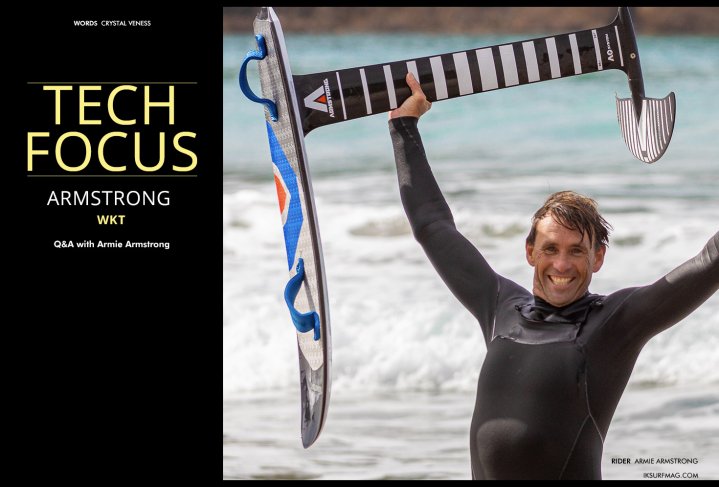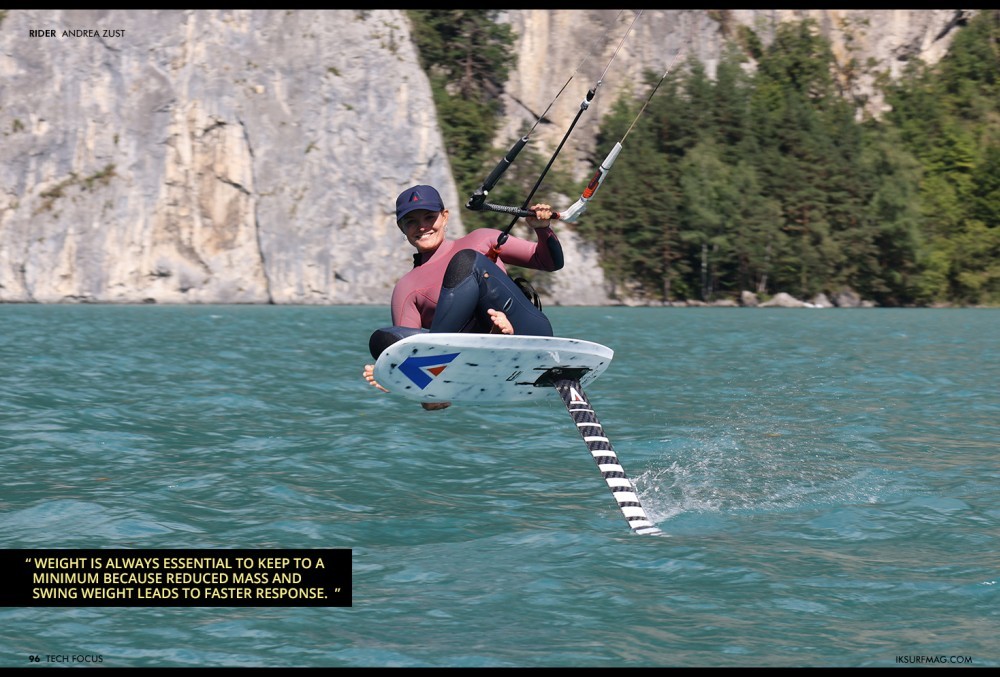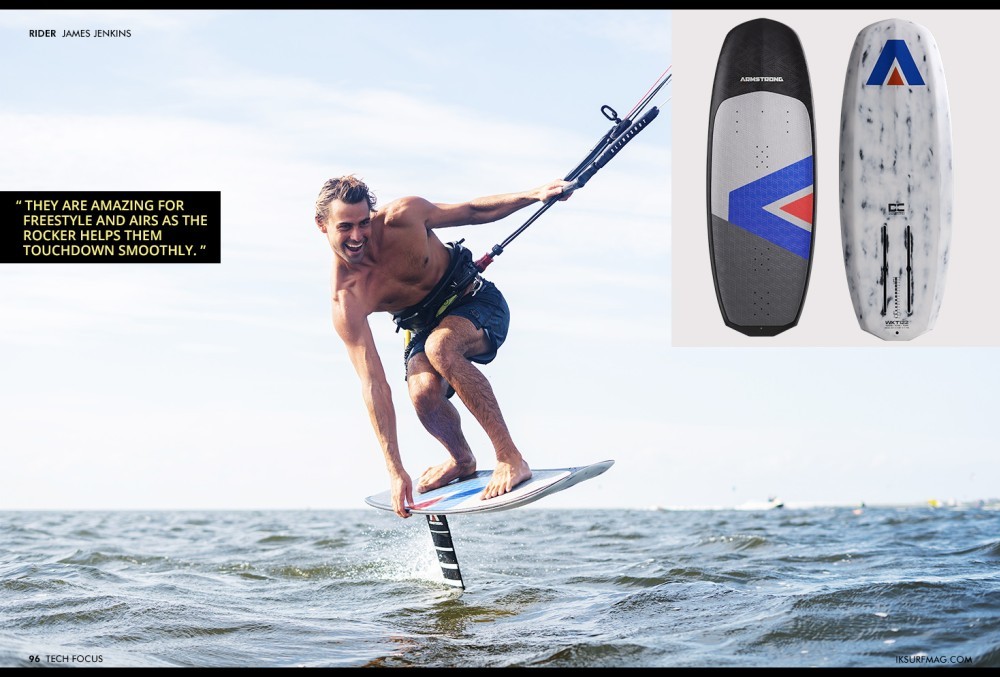
Tech Focus: Armstrong WKT
Issue 96 / Thu 15th Dec, 2022
Armstrong maintains a reputation as one of the leading hydrofoil designers in the industry. With so much attention around what’s happening underneath the board, it’s easy to forget about the board itself! The recent release of the new Armstrong WKT has brought the attention back to the board. We chatted to Armie Armstrong to find out all about it!
Armie, give us a quick introduction to the WKT! What does WKT stand for, and who is this board for?
WKT…Wake, Kite, Tow is what it stands for, and it encompasses the versatility of this new design. The board is ideal for all foil sports that do not require volume. In terms of rider ability, these boards are very forgiving but also very performant, making them ideal for first-timers and experts. The WKT compliments our range and offers the low volume option to all those riders that don’t need or want a higher volume board.
A multi-function board should satisfy the rider who wants to do a bit of everything, which seems like an exciting prospect! The WKT is ultra-thin, light, and stiff. How do these characteristics translate to a solid kitefoil board?
Weight is always essential to keep to a minimum because reduced mass and swing weight leads to faster response. Keeping it as thin as possible means that your foot is very close to the mast top. The closer your back foot is to the top of the mast, the more direct your inputs are, translating to better handling. Combined, these two factors help make the WKT very direct, manoeuvrable and fun to ride.
Let’s talk construction! At first glance, the carbon component is clear. What else is inside this board?
We pioneered our own high-pressure precision moulded carbon construction similar to our new Performance Masts. Dual carbon stringers connect the stance area for extreme solidity, a perforated high-density foam core to keep the weight down and then our own A weave carbon cloth to top it off.
A few features of the board take design and quality to the next level, such as the solid carbon mast tracks and titanium threaded strap inserts. How do these elements stand out within the foil board industry?
We like everything to be as good as we can make it, so it’s once again a no-compromise design. Our carbon tracks were developed to resolve the issue of the plastic ones breaking and being too short. We knew what we wanted, and so we developed the longer carbon tracks.
As with all Armstong products, titanium is widely used as it is simply the best when combined with carbon fibre. There’s no fizzing in the salt water, and the strength-to-weight ratio makes it the best choice. With the added power and torque created with a kite, towing in, or being dragged behind a boat, the board needs to be resilient to all the loads that get put through it. This is unlike surf, SUP or wing foiling, which have a relatively low torque factor and load in comparison.
Which sizes does the WKT board come in? What type of rider should choose which size?
There are three sizes: 109, 122 and 137cm. They are all easy enough to ride, but as ever, the bigger sizes are better suited to larger riders or riders with less skill level. The rocker and outline of the 137 make it really forgiving for inexperienced riders. The smaller sizes are for lightweights and experienced riders regardless of weight; they are amazing for freestyle and airs as the rocker helps them touchdown smoothly.
Many of our readers are experienced kite foilers but have little experience with wake or tow foiling. Could a rider use the same hydrofoil setup with this board for kite, wake, and tow? What would the ideal all-around setup be?
Yes, for sure, the same setup is a massive positive and easily possible. Take the WKT size of your choice, M85 or PM935 mast, TC60 fuse, HS232 tail, and the front wing of your choice. For kiting in general, we recommend the HA925 and below, but all our smaller front wings below a 1000cm2 work well for kiting. We regularly ride the HA925 towing into smaller waves, riding the wake of a boat and, of course, kiting!
By IKSURFMAG









